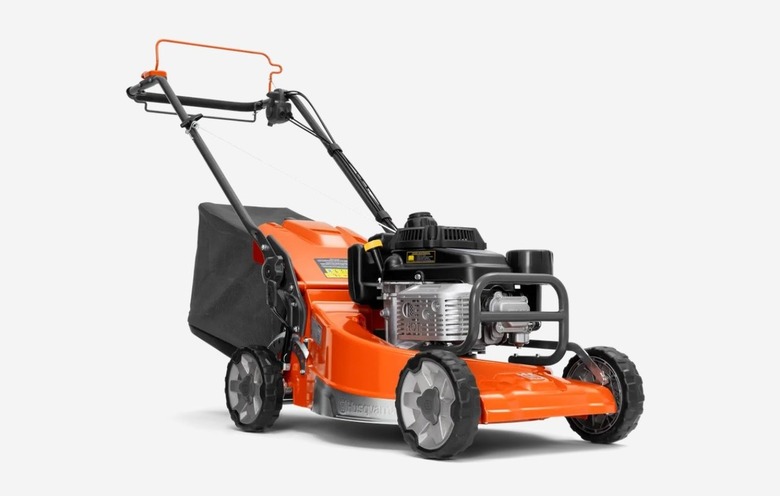The Automatic Choke On My Husqvarna Mower Is Stuck
We may receive a commission on purchases made from links.
It's a great day for mowing, so you wheel your Husqvarna lawn mower out of the garage, check the oil, fill the gas tank, pull the cord and ... nothing. After several tries, you check the plug, which looks OK, and you try again. No luck.
If you have an older mower, the engine may have a manual choke, but newer ones tend to have automatic chokes. Either way, the choke may be responsible for the fact that the mower won't start. You may have to do a bit of disassembly to figure out what's going on, but it's minimal, and the job will be easier if you know where the choke is and what it does. Here's what to do if the choke on your Husqvarna lawn mower is stuck.
How Does an Automatic Choke Work?
How Does an Automatic Choke Work?
The choke is a small flap that swivels in the air intake port in front of the carburetor. The purpose of the carburetor is to mix air and fuel to produce a mixture that readily combusts in the spark plug chamber, and it does a pretty good job all by itself when the engine is running and hot. When the engine is cold, though, it needs a richer gas mixture (more gas, less air) to get the combustion process started. That's the job of the choke.
When the engine is cold, the choke needs to be closed to block airflow to the carburetor. On a mower with a manual choke, you close the choke by moving a lever, but if the mower has an automatic choke, it should be closed by default when the engine is cold. The flap is connected by a linkage to a spring-loaded control knob on the other side of the carburetor near the muffler. When the engine is warm, heat forces this knob to move slightly and open the choke, and when the engine stops and cools down, this knob springs back to its original position, closing the choke.
The Choke May Need Lubrication
The Choke May Need Lubrication
The choke is located right behind the air filter, so to inspect it, you first have to remove the air filter. The actual procedure depends on your model, but it's usually fairly easy and at worst involves using a socket wrench to remove two or more bolts (usually 8 millimeters) before you can lift off the filter housing. The choke should be obvious; it's a metal flap that swivels inside a cylindrical housing just before the carburetor. If you have trouble locating it, follow the throttle cable from the handle to where it terminates in the engine.
If the engine is cold, the automatic choke should be closed; that is, the flap should be covering the opening of the cylindrical housing. If it's open, try closing it with your finger. If it closes and stays closed, it probably just needs to be lubricated. The bar on which it swivels can get rusty or gunked up with grass, and a few squirts of WD-40 or something similar should free it up. Spray the lubricant, wait a few minutes, and then open the choke with your finger and make sure it snaps back to the closed position.
You May Need to Adjust the Linkage
You May Need to Adjust the Linkage
If you close the choke with your finger and it immediately springs open again, the problem is probably that the control knob on the opposite end of the linkage has moved slightly. If this knob moves even incrementally toward the choke and away from the muffler, the linkage will push against the flap and keep it open.
To fix this problem, follow the choke linkage — which is a stiff wire connected to the choke flap — to the other end where you'll see it wound around the control knob. You don't have to mess with the knob; just use a pair of pliers to bend the linkage wire slightly toward the muffler. You only need to bend it a few millimeters — enough to make the choke flap close. Now, you can reassemble what you took apart, and the mower should start on the first pull.
